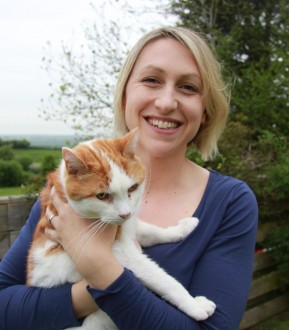"caring for cats"

Subject : Flabby Felines and Cuddly Kitties: The growing problem with feline obesity
Live webinar date: 21st March 2018, 8pm
We often read in the news that humans are getting fatter, and the same is true of cats. The number of overweight and obese cats around the world is increasing. This is to do with overfeeding and inactivity, as the lifestyle of modern cats is very different from cats many years ago. Being overweight may bring negative consequences to a cat’s health, including diabetes, constipation, lower urinary tract disease and osteoarthritis. Preventing and treating weight problems in cats takes time, commitment and support from veterinary professionals, but slow, safe weight-loss can be achieved and improve a cat’s quality of life.
Learning objectives
– Understand the causes of weight gain in cats including diet and activity levels.
– Understand the diseases associated with obesity.
– Understand safe weight-loss plans for cats, including calculating calorie requirements.
– Understand alternative feeding methods including using puzzle feeders
– Understand how to prevent weight-gain before obesity develops.
Speaker: Sam Taylor
 Sam Taylor graduated from the Royal Vet College in 2002 and completed internships in private referral practice before starting a Feline Advisory Bureau Residency at Bristol University. She was awarded the RCVS Certificate in Small Animal Medicine in 2006 and the European Diploma in Veterinary Internal Medicine in 2009. In 2011 she became an RCVS Recognised Specialist in Feline Medicine. As well as working in clinical referral practice at Lumbry Park Veterinary Specialists, she works for International Cat Care specifically involved in distance learning and nursing education, and edits the monthly journal Feline Focus. She is also involved in veterinary further education via the International Society for Feline Medicine as well as lecturing nationally and internationally. She is an editorial board member for The Journal of Feline Medicine and Surgery, and has authored 2 books and numerous book chapters as well as publishing a number of papers on both canine and feline internal medicine.
Sam Taylor graduated from the Royal Vet College in 2002 and completed internships in private referral practice before starting a Feline Advisory Bureau Residency at Bristol University. She was awarded the RCVS Certificate in Small Animal Medicine in 2006 and the European Diploma in Veterinary Internal Medicine in 2009. In 2011 she became an RCVS Recognised Specialist in Feline Medicine. As well as working in clinical referral practice at Lumbry Park Veterinary Specialists, she works for International Cat Care specifically involved in distance learning and nursing education, and edits the monthly journal Feline Focus. She is also involved in veterinary further education via the International Society for Feline Medicine as well as lecturing nationally and internationally. She is an editorial board member for The Journal of Feline Medicine and Surgery, and has authored 2 books and numerous book chapters as well as publishing a number of papers on both canine and feline internal medicine.
March 2018

 menu
menu